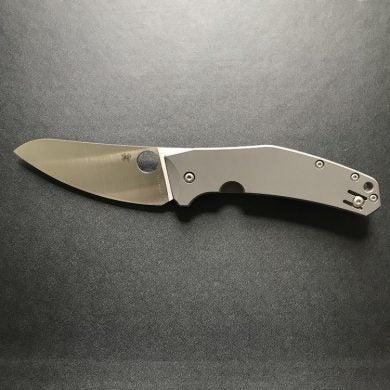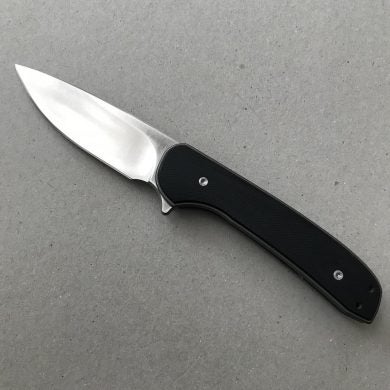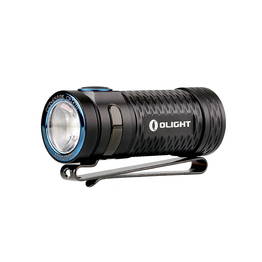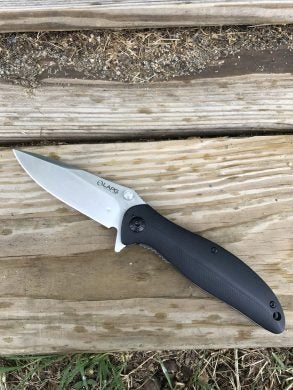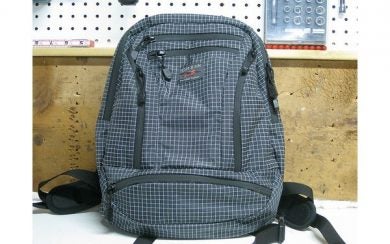Five Trends from the Gear World in 2018
Tony Sculimbrene 09.23.18
)
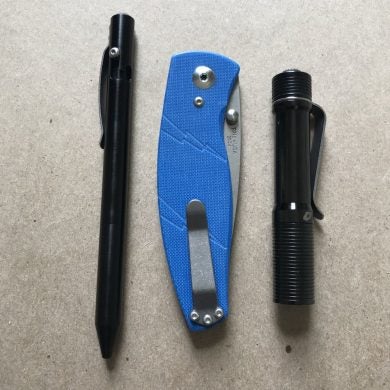
Over the last few years, we have seen some huge technological leaps in knives and flashlights. Things haven’t just gotten better, they have gotten exponentially better. We are in, as I have referenced many times, a Golden Age of Gear. But even in this amazing era for gear, 2018 is a standout year. 2018 has been marked by a huge number of tremendous innovations and leaps in the world of gear. Things that were formerly the province of high end gear or custom tools, such as a high hardness stainless steel, have filtered down to midpriced stuff. But the thing that makes the current gear world so interesting is that innovation is not just coming in terms of engineering or materials, which has always been the hallmark of cool gear. Now we are seeing new ways for gear to make it market and new ways that users are having impact on what and how things are being made. That was just the beginning. Here are five new trends or tech revolutionizing gear people carry.
- Nitrogen Steels
Steel rusts. That just one of the things that you had to accept if you wanted a blade made out of something other than titanium (there are titanium blades but they either stink or cost a ton like Beta Ti). Then a few years ago steel makers swapped out carbon for nitrogen in steel recipes. By removing or minimizing the amount of carbon in a steel, the manufacturers were minimizing the rust-causing element. The first few nitrogen steels were meh—H1, for example, holds a pretty poor edge. But now we have LC200 N (aka Z Finit) and the choice between stain resistance or edge retention is no longer necessary. LC200 N is the reasonably priced material that does well on all three main attributes of steel: hardness, toughness, and corrosion resistance. Think of it as CPM154 that doesn’t rust. Pretty amazing right?
Example: Spyderco Spydiechef
- Crowdsourced Gear
Steve Jobs’ philosophy on design was distinctly elitst—make good things and tell people what they want. That might work with electronic devices, but for tools that engage with the stubborn real world, every design has to work. What better way to make designs that work than consulting people doing that work. And that is what sites like Massdrop do—they poll users and watch their forums and then collaborate on producing gear that meets people’s wants and needs. One look at the Massdrop x Ferrum Forge Gent tells you that this is a product born from user experience and not a desire to include all of the bells and whistles, many of which you never need.
Example: Massdrop x Ferrum Forge Gent
- TIR Optics
Reflectors, the faceted mirrors in the head of a flashlight, are the only part of a flashlight that is still very challenging to make. The rest of a torch is basically a machined tub, a switch, and circuit completed by the switch. If you want multiple modes, throw a tiny CPU in there. But reflectors still take tremendous brainpower to design and high end machines to make. This is why truly great beam patterns are so rare. Of the major production brands only Surefire consistently produces great reflectors. The advent of total internal reflectors, or lens (as opposed to mirrors) that focus a beam, stands to change all of that. Once designed they are easy to produce, cheaper, and more robust. The best TIR produce beams just as good as a reflector. Average TIRs vastly superior to average reflectors.
Example: oLight S1RII
- The Steel “Arms Race”
AUS-8 used to be the average steel. Now, compared to what is out there it is positively AUful. LA Police Gear put out a flipper last year with S35VN and sold it for around $35. The cheapo Chinese brands on Amazon all sport D2 or 14C28N. The average steel now is the very good S35VN. Times have changed and steels have gone bonkers. M390 and 20CV (such as the TRM Neutron pictured above) are not all that rare anymore and there is the aforementioned LC200 N, ZDP-189, and a series of ever harder esoteric steels. Maxamet, REX121, and the non-steel steel found on the Sandrin Knives, Tungsten Carbide promise edge retention that just a few years ago was believed impossible on production knives. And it is not just that great steels are more common—they are cheaper too. Buck makes a special edition Vantage with 20CV that sells for around $90. You can find M390 on knives around $150. We are witnessing an unprecedented steel arms race and unlike a real arms race this is great for everyone.
Example: LA Police Gear TBFKS35VN
- Dyneema and other new fabrics
Hard, sandpaper-coarse nylon has been standard fare for packs for a decade now. And while it is very hardy its pretty heavy, and quite ugly. But now we are starting to see a bunch of new fabrics that are stronger, lighter, and comfortably smooth. Dyneema and Spectra are both fibers made from ultrahigh molecular weight polyethylene. They are, by weight many times stronger than steel, and are even stronger than kevlar. They can, of course, repel water and the like. The secret to these fabrics is biomimicry—Dyneema and Spectra are made by heating the UHMWP into a gel and then forcing them through artifical spinnerets. This is human-made spider silk.
Example: Tom Bihn Synapse 19
I imagine that 2018 is just the start of a few of these trends. I can see Massdrop and places like Massdrop dominating the gear world. They tailor their approach to the niche audience and that, in the end, is who supports the gear world most loyally and drives innovation. I could even see a major gear site like GP Knives or Blade HQ adopting the crowdsourcing model. I also see the steel arms race continuing to go crazy. The first $50 M390 is just around the corner. I can also see the superfabrics continuing to make waves. As cool as packs are that are made from this stuff, its strength means there are whole product classes that can be made from this material.
